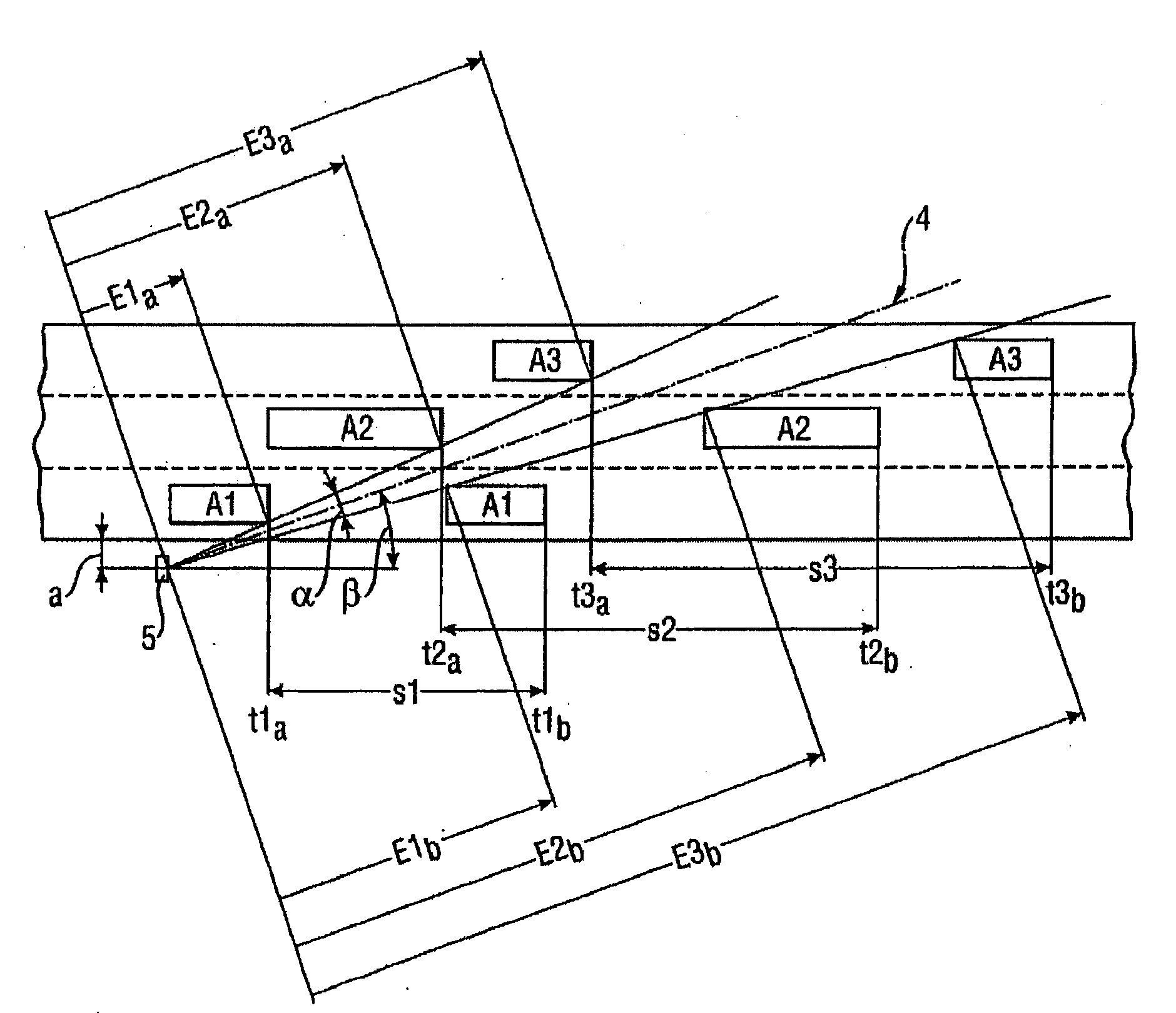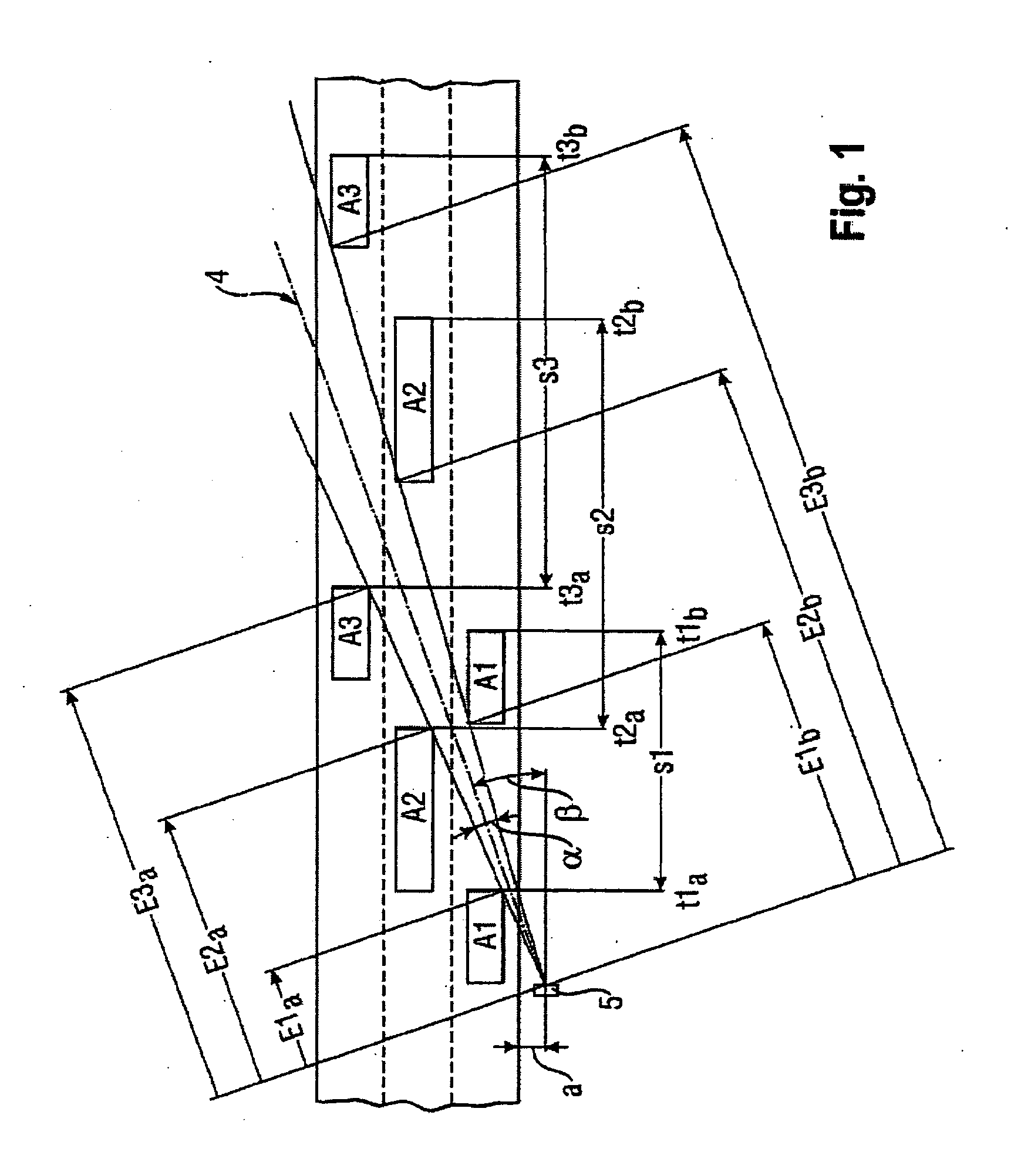Method and Device for Determining the Vehicle Class of Vehicles
a vehicle and class technology, applied in the field of vehicle classification, can solve the problems of increasing the error, increasing the error, and not so as to achieve the effect of improving the accuracy of the discrimination criteria of vehicle length and obtaining more accurately
- Summary
- Abstract
- Description
- Claims
- Application Information
AI Technical Summary
Benefits of technology
Problems solved by technology
Method used
Image
Examples
first embodiment
[0044]To be able to reach a conclusion on a passage distance d directly via the range E, in a first embodiment with reference to FIG. 2, a measured value detection of the range E at the time point of the entry t2a of a second vehicle A2 into the radar cone 4 and at the time point of the exit t2b of this vehicle A2 from the radar cone 4 should be measured. The passage distance d2 is here given from the formula d2=cos(β−α / 2)·E2b−cos(β+α / 2)·E2a.
[0045]By subtracting the passage distance d2 from the driven distance s2 determined in a known way, the vehicle length L2 is given.
[0046]Through a more accurate determination of the driven distance s, the tolerance range for the vehicle length L is considerably reduced. To view the driven distance s as a limited straight line, however, is an idealization, in which the vehicle A, considered as reduced to a point, exactly maintains its direction of travel, i.e., the path that the vehicle A travels describes is a straight line.
[0047]Even if the veh...
second embodiment
[0048] the range measurement could also be determined over the entire passage time, in order to determine from it the vehicle path described by vehicle A and thus the driven distance s, i.e., its length, with even more precision.
[0049]In FIG. 3, five measurement time points are shown. It is clear that the range values E after entry lie on a straight line parallel to the direction of travel as long as the vehicle A has not yet completely entered into the radar cone 4. Then the range value E quickly increases, which is based on the fact that the rear end reflects as a reflector in addition to the vehicle side. From this it also becomes clear that different vehicle contours deliver different signal profiles, which shall be discussed in more detail further below.
[0050]The range values E do not follow the described rule when the vehicle A does not travel constantly in the direction of travel of the roadway.
[0051]With the entry of a vehicle A into the radar cone 4 (measurement range), the...
PUM
 Login to View More
Login to View More Abstract
Description
Claims
Application Information
 Login to View More
Login to View More - R&D
- Intellectual Property
- Life Sciences
- Materials
- Tech Scout
- Unparalleled Data Quality
- Higher Quality Content
- 60% Fewer Hallucinations
Browse by: Latest US Patents, China's latest patents, Technical Efficacy Thesaurus, Application Domain, Technology Topic, Popular Technical Reports.
© 2025 PatSnap. All rights reserved.Legal|Privacy policy|Modern Slavery Act Transparency Statement|Sitemap|About US| Contact US: help@patsnap.com



